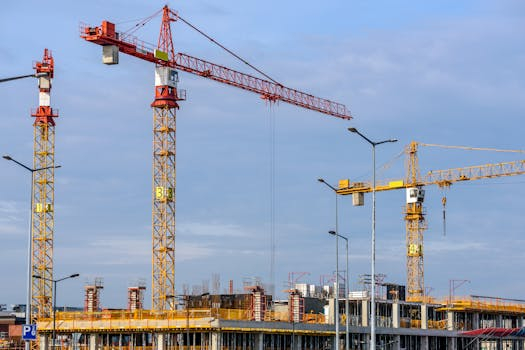Multifamily Housing Boom: The Rise of ADUs and Duplexes
The housing market has been buzzing with activity lately, with a significant rise in demand for multifamily housing. More and more families are looking for affordable options, and developers are finding innovative ways to meet this need. One of the most popular trends in this sector is the rise of Accessory Dwelling Units (ADUs) and duplexes. These versatile and cost-effective housing options have taken the market by storm. In this article, we will delve into the booming trend of multifamily housing and explore the rise of ADUs and duplexes. 
The Benefits of Multifamily Housing
Before we dive into the specifics of ADUs and duplexes, let’s take a look at why multifamily housing is gaining popularity. There are numerous benefits of living in a multifamily property, both for tenants and property owners. For tenants, it offers more affordable options, as the cost of rent is often divided among multiple units. It also promotes a strong sense of community, as neighbors become more like extended family members. For property owners, multifamily housing provides a stable source of income and a higher return on investment than single-family properties.
What are ADUs?
An ADU, or Accessory Dwelling Unit, is a secondary housing unit that is typically built on the same lot as a single-family home. It can be attached, detached, or even converted from an existing space within the main residence. ADUs come in various forms, such as basement apartments, backyard cottages, or in-law suites. These units have their own entrance, kitchen, bathroom, and living space, allowing residents to have their own independent living space while still being connected to the main house. The concept of ADUs has been around for a while, but its popularity has surged recently due to changing housing trends.
The Rise of ADUs
In the past, ADUs were mostly used as a solution for aging parents or adult children living at home. However, due to the influx of young professionals and the high cost of living, ADUs are becoming a popular choice for affordable housing. They are also increasingly being used as rental properties for extra income or as a source of passive income for homeowners. In fact, a report by Freddie Mac states that ADUs can generate an average of $10,000 per year in rental income. With this lucrative potential, it’s no wonder why more developers are looking into building ADUs on their properties.
What are Duplexes?
A duplex is a multifamily property with two separate units, with each unit occupying one floor. They share a common wall, roof, and foundation, but have their own entrances, kitchens, and living spaces. Duplexes can also come in various forms, such as side-by-side, up-and-down, or front-and-back configurations. They offer the same benefits of multifamily housing, such as shared costs and a sense of community, but on a larger scale.
The Rise of Duplexes
Duplexes have been around for centuries, but they are now making a comeback in the housing market. The demand for affordable housing has prompted developers to explore this traditional housing option. It is also seen as a more sustainable option, as it maximizes the use of space on a single lot. The potential for rental income and the option to live in one unit and rent out the other is also attractive for many homebuyers.
The Impact of ADUs and Duplexes on the Housing Market
The rise of ADUs and duplexes is changing the landscape of the housing market. It offers more choices for affordable housing, especially in urban areas where housing prices are skyrocketing. By utilizing existing space on a single lot, it also contributes to more sustainable and efficient use of land. Additionally, it provides more options for homeowners to generate income and build wealth.
In Conclusion
Multifamily housing is seeing a significant boom, and ADUs and duplexes are leading the way. These housing options offer numerous benefits for both tenants and property owners, and their popularity is only set to increase. As the demand for affordable housing continues to rise, these innovative and cost-effective solutions are proving to be the way forward for the housing market.








